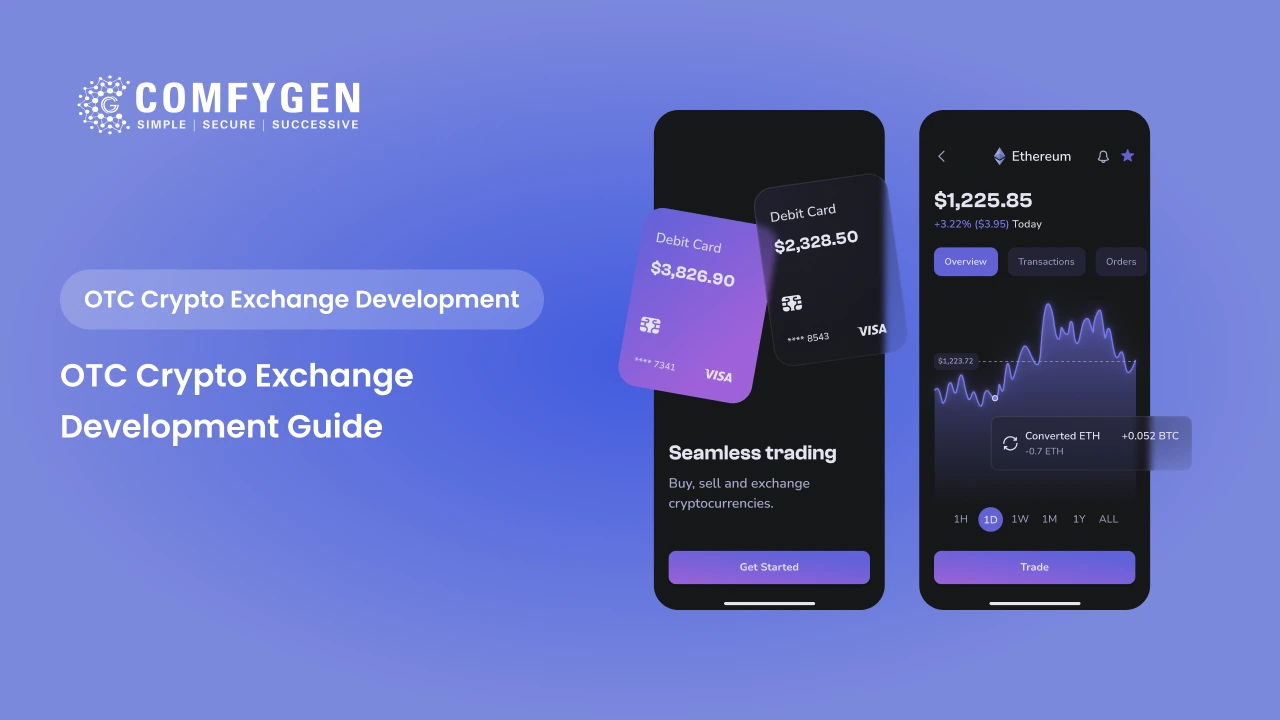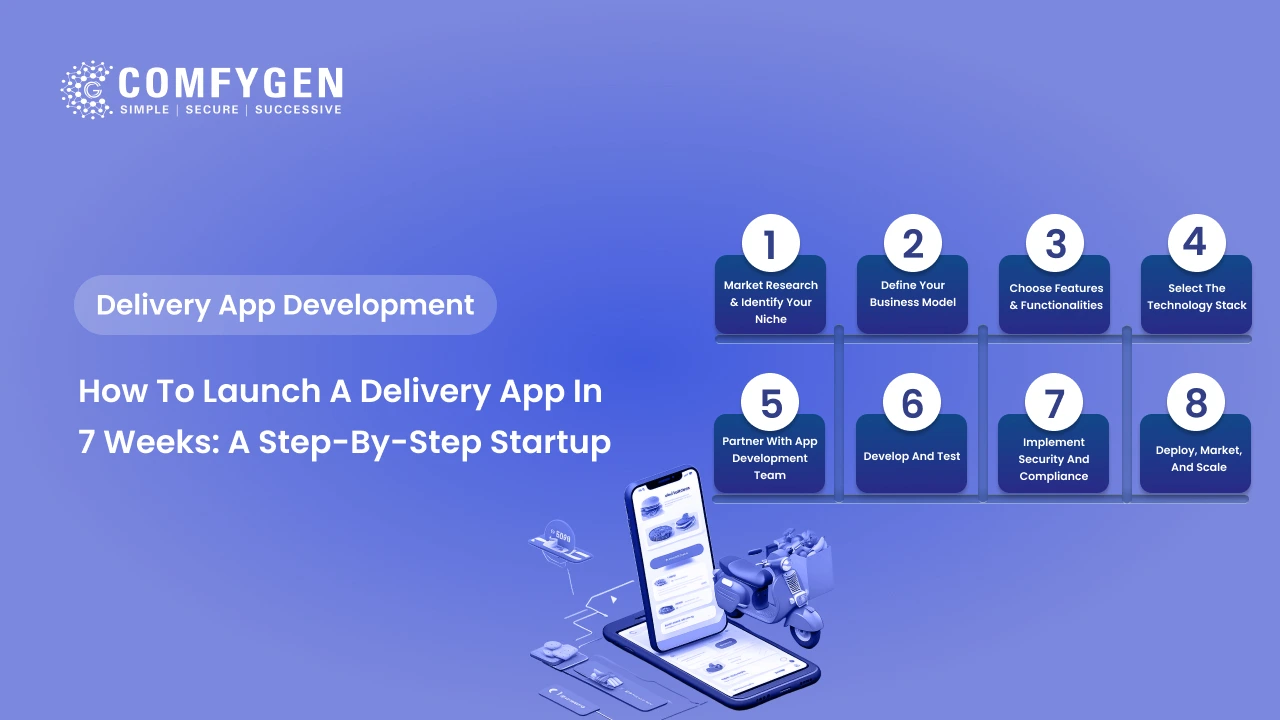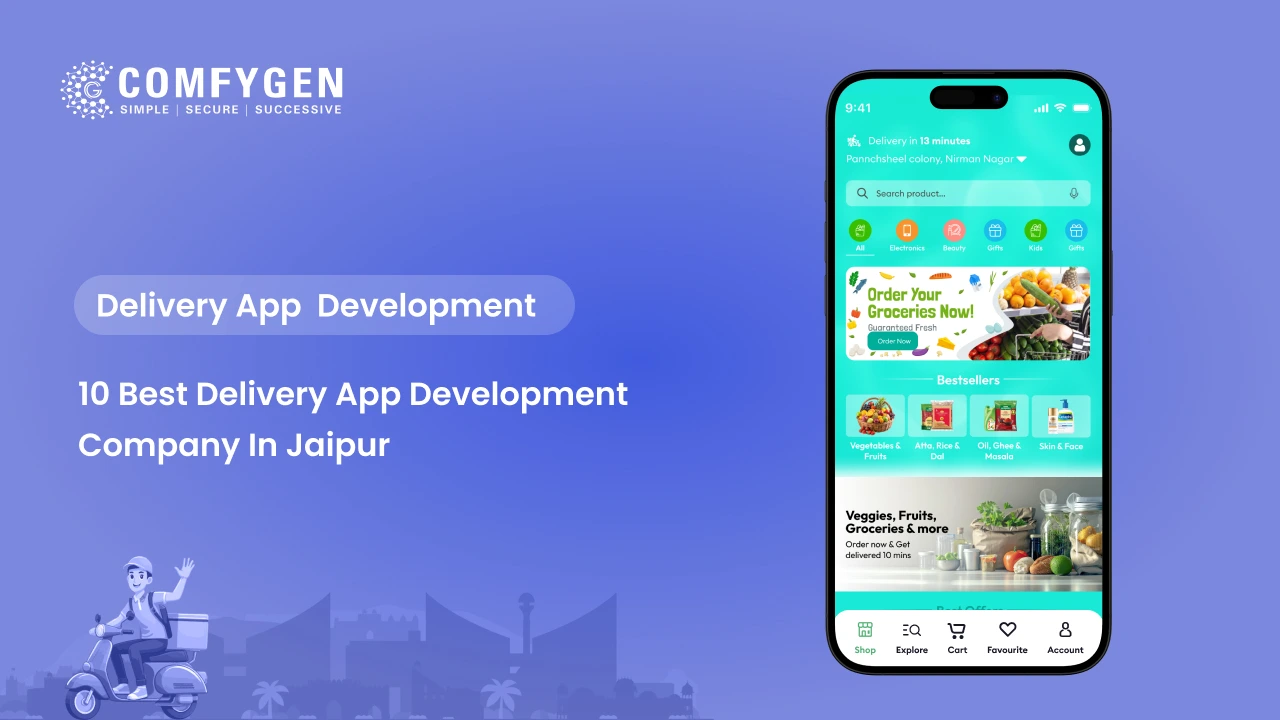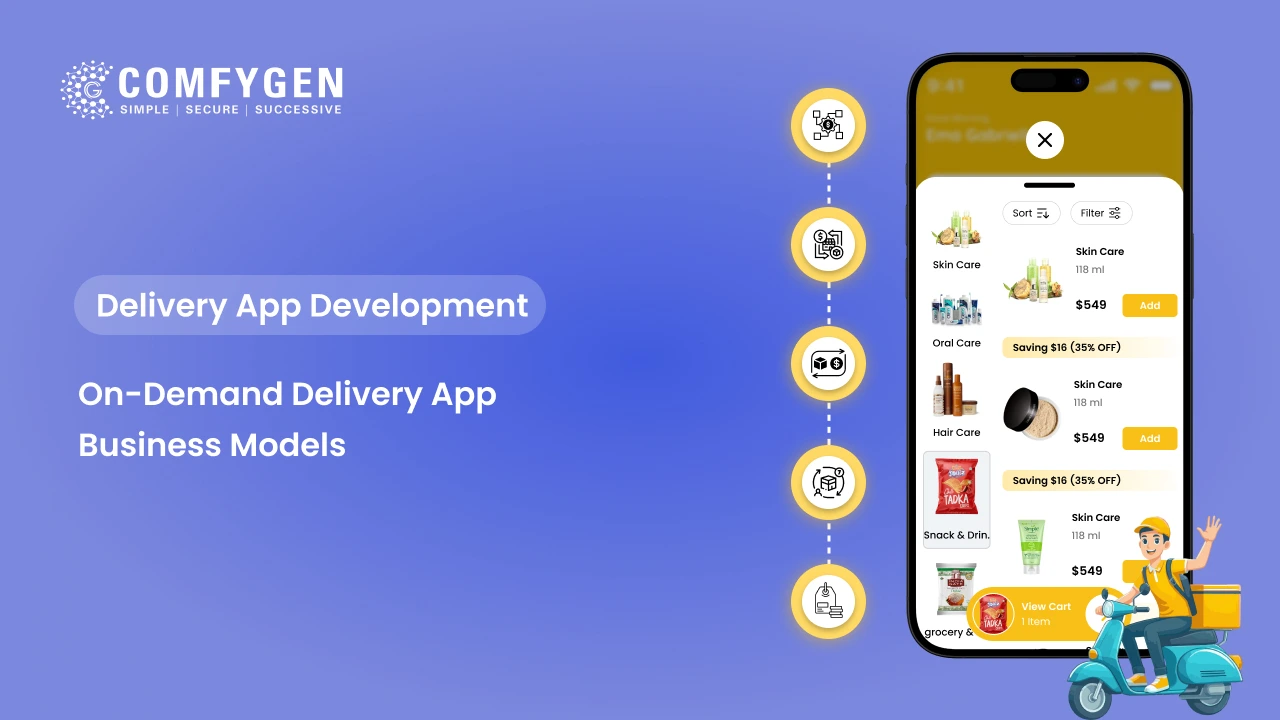OTC Crypto Exchange Development Guide
The cryptocurrency market is now at its maturity, where demand for crypto exchanges is rising due to high volume, security, and discreet transactions. Here, the OTC (Over-The-Counter) Crypto Exchange Platforms are drawing significant attention in the marketplace.
Traditional exchange platforms cater to retail users and public order books. Conversely, OTC platforms are designed for large crypto traders, offering private negotiations, minimal slippage, and instant settlements. All the big investors are shifting to OTC crypto exchange platforms due to their flexibility, liquidity depth, and improved security features.
This demand surge leads to enormous opportunities for entrepreneurs to build new custom OTC crypto exchange platforms. Coding for the robust trading engine isn’t enough; you need to understand the compliance standards, legal frameworks, cost planning, and trends for competitive, future-ready trading platforms.
Let’s begin with the “OTC Crypto Exchange Development Guide” to create a successful platform.
Market Overview and Growth Statistics
In 2024, global OTC crypto trading volume rose 106% year-over-year due to increased institutional involvement and the launch of U.S. spot Bitcoin ETFs.
Estimates indicate that daily OTC crypto trading volumes averaged around $39 billion, with some liquidity providers reporting greater than $100 billion.
Asset-specific growth included:
- Bitcoin (BTC): Increased 80% in OTC trading volumes.
- Ethereum (ETH): Increased 187% in OTC trading volumes.
- Stablecoins: Increased 191% in OTC trading volumes.
Altcoins started in 2023 with a 13% share of OTC trading volume, but increased their overall share to 29% in 2024, suggesting institutions are looking beyond the major cryptocurrencies.
By region, Europe had the greatest share of institutional crypto spot OTC trading, accounting for 38.5% of global volume.
Looking to the future, industry surveys suggest that 18% of respondents expect OTC trading volumes to exceed 100% growth in 2025, while 45.6% expect growth in the range of 10% to 60%.
The insights from the data above confirm that OTC crypto exchanges will play an increasing role in the ever-evolving digital asset infrastructure.
Key Features of a Robust OTC Crypto Exchange
Crypto transactions become the medium for institutions and high net worth individuals alike, building a crypto OTC trading platform that truly performs, can’t only focus on a trading interface.
A successful platform will require an entire feature set that is thoughtfully crafted to facilitate high transaction volumes, security, privacy, compliance, and user experience.
The following are the cornerstones of a successful and scalable OTC crypto exchange platform:
High-Volume Trade Execution
The platform should have the ability to support bulk crypto transactions efficiently, without slippage or downtime. To do this, it will require an optimized matching engine to ensure larger orders are executed efficiently, as well as real-time price feeds to properly execute trades, and trade confirmations to be received immediately.
With the additional support of API-based trade executions, the platform would be able to ramp up algorithmic and API-based trading applications for high-frequency and institutional sizes through an automated, synergistic platform.
Advanced Security Architecture
Safety is not a privilege but is essential and must be part of your exchange. All communications should secure your sensitive data with end-to-end encryption.
Fund storage should utilize multi-signature wallets as the safest measure to lessen the opportunity for unauthorized access. The proper security measures will also include DDoS mitigation and 2FA for all accounts.
You should provide all users with the highest security possibilities, such as biometric logins and anti-phishing measures. This will provide the most secure barrier to threats and additionally develop a higher confidence in your exchange.
Multi-Currency and Multi-Network Support
For your best OTC crypto trading platform to gain a welcome response from a global user base, it should support major cryptocurrencies (BTC, ETH, USDT, etc.) to provide broad appeal to the market. The site must also allow for cross-chain transactions, as blockchain users will appreciate the flexibility offered by trades that involve multiple blockchain networks.
Moreover, if possible, adding fiat on- and off-ramps for currencies in the major markets (e.g., USD, EUR, INR, etc.) will add accessibility and convenience for users throughout the globe.
Liquidity Management Tools
To accomplish a successful Over-The-Counter “OTC” exchange, deep integration with global liquidity providers is necessary to ensure competitive prices and potentially the largest volume of trading.
Additionally, the OTC exchange should contain smart routing features that automatically retrieve the best available trade prices from multiple sources.
Furthermore, it is important to customize spread and slippage margins in the private deal to allow the user the most discretion and flexibility on the trading conditions.
Regulatory Compliance (KYC/AML)
Legally protect the platform by implementing automated KYC and AML verification modules that fully automate identity identification and KYC requirements. You will want to include administrator verification dashboards to allow for simplified compliance monitoring and management.
To best secure your user information and support complete verification processes you will also want to include secure upload features for documents as well as an ID proof system.
Intuitive User Interface
OTC users can face challenges when using a tech-driven platform, including non-tech savvy professionals, so the user interface of the platform should be minimal, responsive and mobile-friendly to maximize usability.
Dashboards should provide easy access to the most important features, like trade history, settlements, and account management. Personalizing deal dashboards and providing integrated broker chat can further enhance the OTC user experience, providing more utility throughout the trading process.
Dedicated Broker Chat or Deal Desk
OTC trades are usually negotiated between parties directly. Therefore, the platform should have a secure chat module or a dedicated broker interface built in or integrated with it to help facilitate communication.
This would include the ability to negotiate deal terms, alerts for updates or actions, and be able to get support in real-time, so that trade execution is seamless and efficient.
Escrow and Custody Solutions
Escrow services offer an additional layer of trust and safe trade settlements by providing secure trading and transparency. Using crypto escrow wallets can protect both parties during the transaction, as the escrow wallet will hold funds securely until all the parties involved agree to the condition.
Escrow services can also include third-party services or custodial services used within the platform, which would help with the platform’s credibility and the user’s level of trust.
Reporting & Analytics Dashboard
Real-time profit and loss information, detailed transaction records, and complete analytics that are accessible to both admins and users provide an intuitive platform for generating reports with export capabilities to satisfy compliance and auditing requirements while improving transparency and maintaining records.
API & Third-Party Integrations
Your platform should be developer-friendly and use RESTful APIs to enable liquidity access, trading bots, and wallet management as needed. OTC crypto exchange developers should also have the ability to integrate seamlessly with custodians, CRM systems, tax tools, payment gateways, and more to create a flexible and efficient ecosystem for crypto exchange developers and users.
Step-by-Step Guide to Developing an OTC Crypto Exchange
Developing a powerful, secure, and compliant OTC crypto exchange platform is a multi-phase process that requires a combination of technical expertise, market understanding, and legal foresight. Here’s a complete, step-by-step OTC crypto exchange development roadmap to guide you through the process:
Step 1: Market Research & Requirement Analysis
Review the current OTC crypto marketplace to better understand your market. Who is your audience? Are they institutions, High Net worth (whales), or active traders? You will have to determine your target and think about how to market to your target audience with your offering. Be sure to list the supported assets as well.
For example, BTC, ETH, USDT, etc, so that you can meet client expectations. Look at your competitor’s offering and try to find problems where you can exploit their weaknesses. Investigate the regulations by region and ensure you are compliant, which will mitigate any risks.
Pro Tip: Use tools like Tracxn, Zintlr, and LinkedIn to analyze active OTC players and funding data.
Step 2: Define Features and Platform Architecture
Based on your research, you will compile an articulated feature specification document that defines the main components of the OTC crypto platform.
First, define the user modules, including traders, brokers, and admins (with specificity, and variety in modules, some with restricted functionality) that share certain functionality.
Including a security interface that implements as much security as possible to protect users -including 2FA, end-end encryption, escrow, and using trusted custodians to hold users’ assets/information/data.
Define functional modules, including KYC and AML, liquidity routing to allow traders to connect and execute trades quickly and effectively, APIs for various external systems, and dashboards for operational intelligence to see trades in real-time.
Finally, include role-based access for user permissions to grant users different blocks of access based on role-based function, and perform secure structuring for feature access.
Outcome: Complete technical BRD (Business Requirement Document) and low-fidelity UI wireframes.
Step 3: Choose the Right Technology Stack
Your tech stack determines the platform’s scalability and performance. Recommended:
- Frontend: ReactJS / Angular for a seamless user experience
- Backend: Node.js / Python for the trade engine and logic
- Database: PostgreSQL / MongoDB for secure storage
- Blockchain: Ethereum / Binance Smart Chain (if using tokenized assets)
- Security Tools: JWT, SSL, OWASP protocols
Also consider: Using WebSocket for real-time trading interactions.
Step 4: UI/UX Design and Prototyping
Create an easy option with an easy interface in Figma or Adobe XD and keep it simple. Ensure that large orders require the least amount of steps to help facilitate the user’s trading.
Incorporate a broker-dealer user interface to enhance interaction and management. Include a dark and light theme option to keep the trader comfortable after using the group for an extended time.
Most importantly, keep the mobile responsiveness in mind, with over 80% of expected traffic coming from mobile devices. And always design for all screen sizes.
Step 5: Core Platform Development
Now begins the work of actually building the core matching engine if required, integrating all wallet types, such as cold, hot, and multi-signature wallets, setting up API connections with liquidity providers, custodians, or identity verification and KYC providers, as well as User dashboards, KYC modules, and trade confirmation logs.
All of the items you develop need to facilitate a cohesive user experience. The builds you develop will take place within actual Agile sprints, allowing you to ensure ongoing progress tracking throughout the sprints and programming tasks. Regular regression testing will be essential to maintain quality and stability at every step.
Step 6: Security Implementation and Testing
Before launching, the platform needs to perform exhaustive stress testing and security protocols to make sure it can perform as promised and provide as safe a user experience as possible.
This process should involve full vulnerability scans and penetration tests to determine any possible exploitable risks. When testing for security, it is critical to have Two-Factor Authentication (2FA), check for DDoS attack vulnerability, and ensure all data is encrypted.
If applicable, smart contracts need to be audited for integrity, security, and compliance. Additionally, the backend APIs must be audited for security, integrity, and compliance as well.
Using a third-party firm to perform an independent security audit and certification adds credibility and a level of trust to the platform.
Step 7: Deployment and Maintenance
When you go live, use a reputable cloud provider such as AWS or DigitalOcean to ensure that you can easily scale and that you are confident in performance. Set up CI/CD pipelines to streamline your deployments and updates as much as you can. Use monitoring tools, such as Datadog or New Relic, to monitor your system and performance in real-time, so that if a problem arises, you can see it and resolve it quickly.
Implement rollback functionality, or instant rollback functionality, in case of bugs or failures; if a failure occurs, you can quickly roll back your live instance, and users can continue their journey without any disruption.
It’s essential to establish trust with your users after going live, and the best way to take care of that is to provide 24/7 support. Don’t forget to keep your users updated on your improvements and product enhancements! Keeping users updated ensures that your uptime remains on par or closer to 100.
You’ll want your users to view your service as reliable, consistent, and trustworthy.
Regulatory Compliance and Legal Considerations OTC Crypto Exchanges
Regardless of how powerful or feature-rich your OTC crypto exchange might be, it won’t succeed without aligning it with changing global crypto regulations. Regulatory compliance ensures trust, scale, and legitimacy – crucial when you are servicing institutions, high-net-worth individuals, and cross-border clients.
Why Compliance is Crucial for OTC Crypto Exchanges
OTC platforms conduct high-volume transactions, making them more easily exploited for money laundering, fraud, and sanctions violations. Therefore, regulatory frameworks like KYC (Know Your Customer) and AML (Anti-money laundering) are not just seen as best practices but as nascent requirements in most jurisdictions.
Global Legal Landscape Overview
- USA: Must register with FinCEN; comply with the Bank Secrecy Act (BSA) and enforce AML programs.
- Europe: Follow MiCA (Markets in Crypto-Assets Regulation) and GDPR for user privacy and crypto asset trading.
- UAE & Singapore: Require exchange licenses through VARA (Dubai) or MAS (Singapore) with robust data control practices.
- India: KYC & tax compliance via FIU-IND registration, though full regulation is still evolving.
Key Legal and Compliance Requirements
KYC (Know Your Customer)
- Real-time ID verification
- Document upload modules (Aadhaar, Passport, SSN, etc.)
- Facial recognition or liveness check integrations
AML (Anti-Money Laundering)
- Transaction monitoring systems for suspicious activity
- Volume-based red flags and reporting
- Integration with international watchlists (OFAC, FATF)
Data Privacy & Security Compliance
- Implement GDPR or CCPA if operating in respective regions
- Ensure encrypted storage, user data anonymization, and data portability
Licensing & Legal Registrations
- Choose a favorable jurisdiction (e.g., Lithuania, Estonia, UAE, Singapore)
- Get legal counsel to draft operational policies, terms of use, and user agreements
Security Measures and Risk Management OTC Crypto Exchange Software
The function of crypto OTC trading platforms is to trade the high-value and high-volume transactions that occur outside public order books. Unfortunately, these high-value transactions also make these spaces larger targets for cyber-related attacks, internal fraud, and regulatory scrutiny; security and risk management practices are vital to incubating trust and reaping benefits from a successful model.
End-to-End Encryption
All communication, including broker chats, transaction details, and user data, must be encrypted using AES-256 or TLS 1.3 protocols to prevent man-in-the-middle attacks and data breaches.
Multi-Signature Wallets
Use multi-sig wallets that require authorization from multiple parties to process large withdrawals, reducing single-point failure and insider threats.
Cold and Hot Wallet Separation
- Hot wallets: For immediate transactions, with limited funds.
- Cold wallets: For bulk storage, kept offline and air-gapped.
Implement real-time wallet monitoring for unauthorized access attempts.
Authentication & Access Control
- Two-Factor Authentication (2FA) for all users and admins
- Role-Based Access Control (RBAC) for brokers, traders, and internal staff
- Biometric login for mobile-first users
- IP whitelisting and session timeout policies
Advanced Risk Mitigation Strategies
Real-Time Transaction Monitoring
Detect high-risk patterns using AI-driven analytics:
- Unusual trade volume spikes
- Repeated failed logins
- Geographical anomalies
Anti-DDoS Protection
Prevent service downtime and protect your backend with:
- Cloudflare or AWS Shield integrations
- Load balancing and rate limiting
Regular Security Audits
Conduct monthly or quarterly:
- Smart contract audits (if applicable)
- Penetration testing and ethical hacking
- Code vulnerability scans using tools like SonarQube, OWASP ZAP, or Burp Suite
Internal Risk Governance
- Maintain detailed incident response protocols
- Keep an encrypted audit trail for every trade, access, and system change
- Set up multi-party sign-off for fund transfers above a threshold
Integration with Compliance and Analytics Tools
- Chainalysis, Elliptic – For blockchain surveillance and fraud detection
- SIEM Tools (e.g., Splunk, LogRhythm) – For centralized log management and alerts
- Smart monitoring bots to auto-flag abnormal activity
Consequences of Ignoring Security
- Loss of user trust & reputation
- Major legal penalties or shutdowns
- Instant liquidity collapse
- Data theft & ransomware extortion
Liquidity Management and Integration
If you do not have the liquidity to enable large orders to be filled, the trades are simply unable to be settled effectively, which could lead to slippage, execution delays, or frustrated users. Managing liquidity effectively is what fundamentally separates a scalable crypto OTC trading platform from one that cannot keep up with institutional-grade expectations.
What is Liquidity in OTC Crypto Trading?
When discussing OTC crypto trading, liquidity refers to how easily large volumes of crypto assets can be bought and sold with a minimal effect on the market price. OTC exchanges either have to have liquidity pools in-house or have to connect to external providers to facilitate steady trading.
Types of Liquidity Sources to Integrate
Internal Liquidity Pool
- Maintain a reserve of popular crypto assets (BTC, ETH, USDT, etc.)
- Enable auto-routing of internal matching to reduce third-party dependency
- Set dynamic spreads based on market volatility
Third-Party Liquidity Providers (LPs)
- Integrate with global LPs like Binance Liquidity, Kraken OTC, Cumberland, Genesis Trading
- Use FIX or REST APIs to fetch real-time quotes and execute large orders
- Establish volume-based partnerships to reduce transaction fees
Decentralized Liquidity Networks (Optional)
- Platforms like Uniswap or 1inch can provide decentralized liquidity, useful for altcoin support
- Use cautiously with compliance filters in place
Key Features for Liquidity Integration
- Smart Order Routing (SOR): Direct trades to the best available liquidity source
- Custom Spread Control: Define your markup/margin on each asset
- Slippage Tolerance Settings: Allow users to set limits on price movement during order execution
- Auto-Rebalancing Engine: Maintain liquidity ratios across assets and wallets
Admin Panel Liquidity Tools
- Liquidity usage analytics (real-time & historical)
- Volume management dashboard
- Integration health checks (monitor provider uptime & latency)
- Manual override system for large deal approvals
Pro Tips for Building Liquidity
- Start with stablecoin-heavy pairs like BTC/USDT, ETH/USDT
- Offer incentives to LPs for tighter spreads and higher availability
- Maintain transparency on spread, fee, and execution details
- Enable broker-led negotiations for complex, high-volume deals
Risks Without Proper Liquidity Management
- Failed or delayed transactions
- Price manipulation
- Loss of institutional clients
- Poor user retention and bad brand reputation
How Comfygen Can Help You Build a Powerful OTC Crypto Exchange Platform
Building a secure, scalable, and regulation-ready OTC crypto exchange demands more than just coding—it requires strategic planning, domain expertise, and deep blockchain capabilities. That’s where Comfygen steps in as your end-to-end OTC crypto exchange software development partner.
Full-Cycle Crypto OTC Trading Platform Development Support
From idea validation and UI/UX design to backend logic, liquidity routing, and post-launch maintenance, Comfygen offers complete development services tailored for OTC trading platforms.
Blockchain & Crypto Domain Experts
Our team has hands-on experience in blockchain development solutions, including:
- Multi-chain wallet integrations (BTC, ETH, BNB, USDT, etc.)
- Escrow and custodial wallet implementation
- Smart contract development & audits
Built-In Compliance and KYC Integrations
We integrate with top identity verification providers and design your platform to meet global KYC/AML, GDPR, and regional crypto regulations, ensuring you’re always compliant.
Custom Broker & Admin Dashboards
We build intuitive dashboards with:
- Real-time trade tracking
- Deal negotiation interfaces
- Liquidity analytics and role-based controls
API-Ready, Scalable Architecture
Whether you’re integrating with liquidity providers, payment gateways, or institutional trading desks, our tech stack supports it all with modular, API-first architecture.
Faster Time-to-Market with White Label Options
Need to launch quickly? Choose our white-label OTC crypto exchange development solution and get a ready-to-go platform customized for your brand, faster and at a lower cost.
Ongoing Support & Maintenance
Post-deployment, we ensure:
- 24/7 technical support
- Security patches and updates
- Feature upgrades based on user feedback
Final Verdict
The demand for secure, private, and high-volume crypto transactions is rapidly rising, and OTC crypto exchanges are at the forefront of this evolution. As institutions and high-net-worth traders continue to dominate the market, building an OTC platform offers a powerful opportunity to meet this growing demand with innovation, reliability, and compliance.
But success in this space isn’t just about development—it’s about building a platform that combines real-time liquidity access, airtight security, global compliance, and a seamless user experience. Whether you’re a fintech startup, a blockchain entrepreneur, or an enterprise looking to enter the crypto space, the roadmap shared in this guide equips you with everything you need to understand the process, challenges, and potential of OTC crypto exchange development.
By partnering with experienced blockchain development companies like Comfygen, you can fast-track your product launch, ensure regulatory readiness, and deliver a trading platform trusted by top-tier traders worldwide.
The future of institutional crypto trading is off the charts—now is the time to build.

Mr. Saddam Husen, (CTO)
Mr. Saddam Husen, CTO at Comfygen, is a renowned Blockchain expert and IT consultant with extensive experience in blockchain development, crypto wallets, DeFi, ICOs, and smart contracts. Passionate about digital transformation, he helps businesses harness blockchain technology’s potential, driving innovation and enhancing IT infrastructure for global success.










